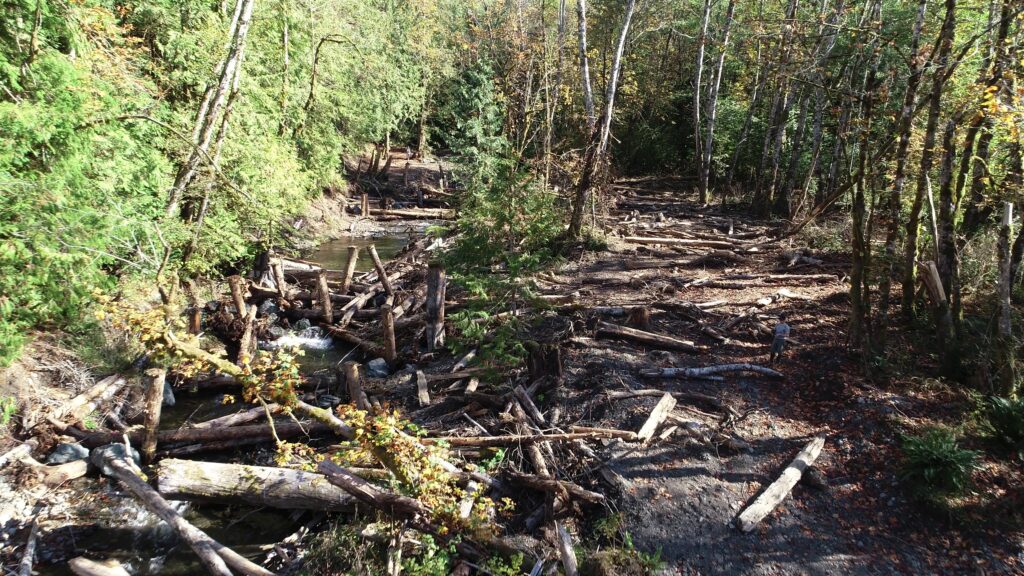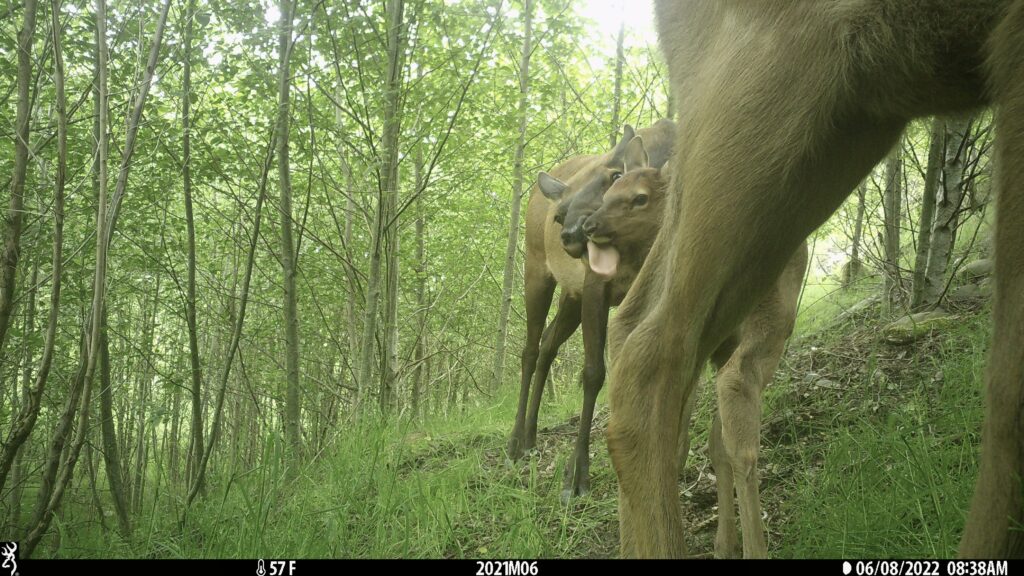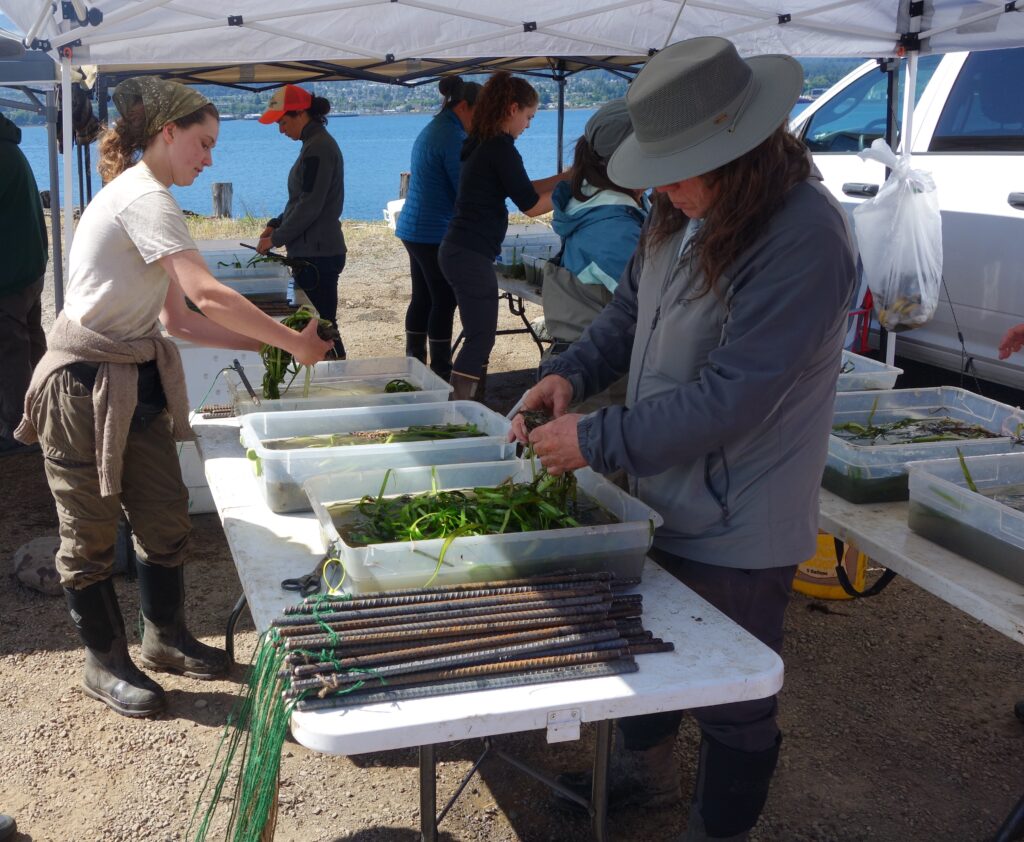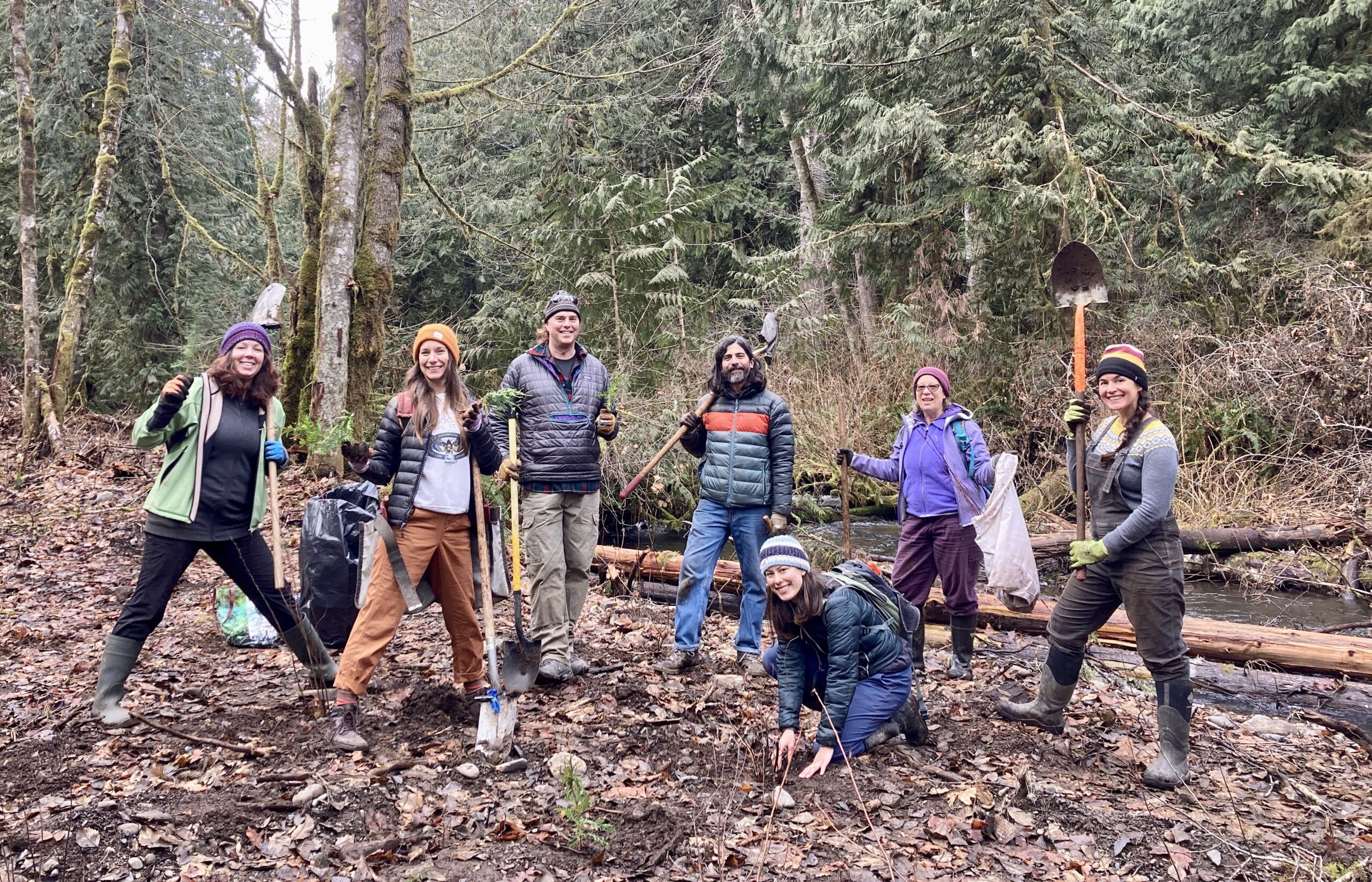Just West of the Elwha River, near the new bridge construction on Highway 101, I join Lower Elwha Klallam Tribe (LEKT) Natural Resources Department staff, Clallam Conservation District (CCD) organizers and local volunteers who are gathered around a trailer full of young plants.
Recovering pre-dam salmon habitat in the Elwha valley goes beyond the Elwha River itself; it includes tributaries that provide water, sediments and organic material, as well as places for adults to spawn and their offspring to grow. The importance of Indian Creek for fish habitat has only been recently realized once again.
“I had surveyed Indian Creek for years, wondering why there were no spawners, even after the dams were removed. I noticed the substrate had no gravel or fine sediment. As I was walking away from the channel, I realized I had gone up and then down over a hump. I kicked the duff and surface ‘soil’ to find homogenous cobbles – and then it hit me. This was not a natural feature. I was standing on a dike.”
LEKT fish habitat manager Mike McHenry explains the process of removing the 700’ long human-made embankment likely constructed to divert flow away from the highway over a century ago. Since dam removal, the Tribe has identified areas outside of Olympic National Park impacted by historic land uses. Little River is another example of an Elwha tributary, where recent efforts have restored connectivity to historic floodplains and immediately resulted in significant improvements to fish habitat.

While volunteers plant saplings along a deep pool that had formed behind wood that was placed on Indian Creek last year, LEKT technician McKenzi Taylor enthusiastically re-tells the story of how the project was halted even before it was complete when adult salmon were observed spawning where they were working. Revegetation will secure this habitat for future generations of fish.
The LEKT Natural Resources department includes a wide range of programs, some that have emerged as the recovery process has evolved. For example, wildlife monitoring efforts demonstrated increasing ecosystem complexity by documenting the expansion of animals utilizing the Elwha watershed, specifically in places that have been revegetated. This has led to the Olympic Cougar project, a collaboration among six Tribes and large cat conservation non-profit Panthera to understand habitat connectivity across the Olympic peninsula for wildlife.

There are many successes on the Elwha River; yet, nearly a decade since restoration-related projects began and much of the funding has dried up. This at a time when the recovery of fish populations has still not been sufficient to support the restoration of indigenous human connections to the river. But just as the at once desiccated and desolate lakebed landscape above the former dams opened up space for ecosystem renewal, the need for volunteers has created opportunities for revived community engagement.
“It warms my heart to see [volunteers] out here,” says LEKT Senior Fisheries technician and tribal member Sonny Sampson who came to assist with the Indian Creek planting event, “I had no idea so many people were interested to come help.”
Sonny tells me he started at Natural Resources 30 years ago to help the fish and describes his excitement from recent fish surveys. “This is just the beginning,” he says.

Continued efforts are needed to ensure the long-term recovery of this dynamic social ecological system and there are many ways to get involved! To find out more about restoration projects carried out by LEKT and its partners, go to: https://www.elwha.org/departments/natural-resources/
Text by: Chelsea Behymer, Elwha science outreach coordinator, LEKT/American Conservation Experience, chelsea.behymer@elwha.org
Photos: LEKT Natural Resources
This article was also posted in the Peninsula Daily News & Sequim Gazette Earth Day Special issues; to read the full issue, click here: Olympic Earth Day Climate & Energy Resilience – April 20, 2023 by Sound Publishing

